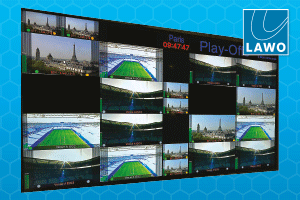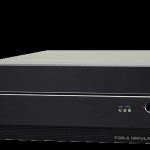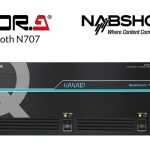The MEA broadcast landscape is evolving smartly, with broadcasters choosing technologies that meet current needs and prepare them for the future, building on proven foundations instead of starting anew.
By Mohammed Abu Ziyadeh, Regional Manager for Middle East & Africa, FOR-A.
The broadcast industry loves to talk about revolution. IP workflows, cloud production, software-defined everything – the narrative often suggests that broadcasters need to tear down their existing infrastructure and start fresh. But here in the Middle East and Africa, I’m witnessing something far more pragmatic and, frankly, more intelligent: evolution over revolution.
Working from our Dubai hub and supporting broadcasters across this vast, diverse region, I see firsthand how MEA operators are navigating technological change with a wisdom that comes from understanding their unique operational realities. They’re not rushing to abandon proven technologies; instead, they’re strategically adopting new capabilities whilst maintaining the rock-solid reliability that their audiences and stakeholders demand.
The Reliability Imperative and Regional Diversity
Consider the operational pressures facing broadcasters in our region. When Al Sharqiya covers breaking news across Iraq and the broader Middle East, or when Production Crew produces live sports coverage for Saudi Arabia’s expanding entertainment sector, there’s absolutely no margin for error. These aren’t just business operations – they’re critical communications infrastructure that audiences, governments, and sponsors depend upon.
This reliability requirement shapes every technology decision. It’s why Al Sharqiya chose our HVS-1200 switcher for their Dubai newsroom – not because it was the flashiest option, but because it delivers broadcast-grade reliability whilst future-proofing their investment with 12G-SDI capabilities ready for their planned Ultra HD transition. Similarly, Sharjah TV required absolute reliability for mission-critical government event coverage combined with creative flexibility for cultural programming, leading them to implement a sophisticated dual-switcher setup featuring the HVS-2000 as main and HVS-1200 as backup. These broadcasters needed technology that works flawlessly today but grows with them tomorrow.
One aspect that outsiders often underestimate is the sheer diversity of our region. Technical standards, content requirements, infrastructure maturity, and production scales vary dramatically from country to country. A solution that works perfectly for a high-end sports production in Dubai might be completely inappropriate for a news operation in Lagos or a cultural programme in Cairo. This diversity actually drives innovation in interesting ways, pushing us to develop solutions that are genuinely flexible rather than one-size-fits-all.
The Smart Hybrid Approach
What I find particularly interesting is how MEA broadcasters are embracing hybrid workflows that blend traditional and next-generation technologies. Production Crew’s new 12G-SDI outside broadcast unit exemplifies this approach perfectly. They wanted the creative flexibility of modern production tools, but they also needed the operational certainty that comes with native 12G-SDI infrastructure.
This isn’t about being conservative, it’s about being smart. The 12G-SDI architecture provides immediate 4K capabilities with the simplicity and security that live production demands, whilst still offering pathways to IP integration when business cases and operational requirements align. The modular approach we see in products like our FA-1616HB-12G platform allows broadcasters to build exactly the functionality they need, whether they’re focused on remote production with JPEG XS support, SMPTE ST 2110 implementation, or exploring new technologies like AI-assisted production.
The most successful broadcasters I work with view technology as an enabler of content and business goals, not as an end in itself. This pragmatic approach is leading to some fascinating hybrid architectures: IP connectivity for remote collaboration combined with SDI infrastructure for mission-critical switching, software-defined capabilities for creative flexibility paired with hardware reliability for core operations, and AI tools for production efficiency integrated with proven broadcast-grade equipment for output quality.
Building the Future Intelligently
Perhaps most exciting is how this evolutionary approach is positioning MEA broadcasters for growth. Saudi Arabia’s Vision 2030 is driving massive investment in entertainment and sports production. The UAE continues to expand as a regional media hub. African markets are seeing unprecedented growth in local content production.
Broadcasters who have built flexible, future-ready infrastructure, rather than cutting-edge systems that might be obsolete in two years, are best positioned to capture these opportunities. They can scale up for major events, adapt to new content requirements, and integrate new technologies as business cases develop.
The MEA broadcast landscape is evolving rapidly, but it’s evolving intelligently. Broadcasters are making technology choices that serve their current operational needs whilst preparing for future opportunities. They’re building on proven foundations rather than starting from scratch.
This evolution-over-revolution approach isn’t just smart for individual broadcasters; it’s creating a robust, adaptable industry infrastructure that can support the region’s growing content ambitions. Whether it’s covering major sporting events, producing cultural programming that reflects our diverse communities, or delivering the reliable news coverage that democracy depends upon, MEA broadcasters are proving that thoughtful evolution often beats dramatic revolution.
The future of broadcasting in our region isn’t just about having the latest technology – it’s about having the right technology, implemented thoughtfully, supporting real operational needs and business goals. That’s the kind of future I’m excited to help build.














































































